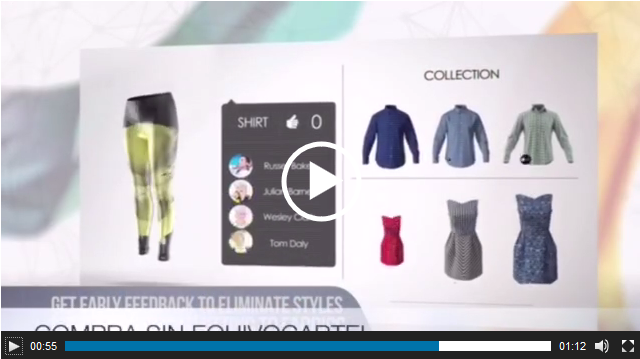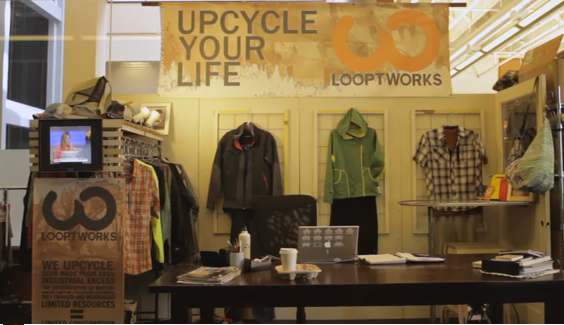
Sostenibilidad y tecnología del lujo
La industria del lujo y el diseño va avanzando, mano a mano, con la tecnología. Cada vez son más los proyectos que posicionan la Sostenibilidad como valor y motor principal. Es el caso de Scott Hamlin, un emprendedor americano, apasionado de la Moda. Pone en práctica la sostenibilidad del reciclaje de materiales. Además, con su empresa Looptworks quiere que las personas se conciencien del importante papel social que forman en el entorno que los rodea.
El Instituto de Empresas de Madrid nos presentó a Scott Hamlin, entre otros emprendedores. Podíamos conocer de primera mano que la industria del textil y el lujo traspasa fronteras gracias a personas como Hamlin y la tecnología. El pasado martes 21 de junio, Dress60 pudo hablar con el fundador de Looptworks. Se trata de una plataforma online que permite conocer el trabajo de reciclaje y reutilización que realiza la empresa. A través de los recursos materiales que ya han formado parte de la Moda, Looptworks crea y da vida a bolsos de diario y de viaje. De una manera sostenible, ecológica y, gracias a la tecnología que utilizan, no pierden la calidad del producto final.
La presentación de Looptworks se enmarcó en el encuentro “Smart Luxury, a trending theme in the premium & luxury sectors”. El mismo lo presentó María Eugenia Girón, directora del Observatorio del Mercado Premium del Instituto de Empresa de Madrid. El IE acogió a grandes profesionales, amantes del Diseño y la Calidad. La conferencia empezó con ideas claves referentes a la importancia que está teniendo la tecnología. La Moda se está envolviendo de innovación. La ya famosa “tecnología de las cosas” se hace patente en los tejidos y complementos.
Esta vez, la tecnología aparece como canal para llegar a los rincones más ocultos de la industria. La moda y el lujo no son solo el recurso utilizado y después tratado para elaborar una pieza única, sino una mezcla de recursos, cultura, pasión, arte y tecnología.
Se escucharon frases maravillosas como que “las personas viven la experiencia de las cosas y alcanzan lo social, la innovación. Los consumidores son lujosos y eligen por pasión y por esa experiencia, no porque la marca les obligue a pagar”. Los ponentes explicaban que el lujo no iba a desaparecer en una tela de mala calidad sino que el consumidor buscaría la experiencia como una filosofía de consumo sostenible. Gracias a esta mentalidad las personas dotaban a las marcas de valores emocionales intangibles y la sostenibilidad podía tener cabida en esta industria.
Sobre opiniones, igual que sobre gustos. Bien es cierto que la tecnología avanza y gracias a ella Pepita Marín revoluciona este sector con su propuesta We Are Knitters. En ella vende experiencia y crea comunidad. Asimismo Kavita Parmar, de IOWEYOU (IOU), propone innovar y avanzar en la creación de nuevas tendencias. Según Parmar «volvemos a los estilos pasados pero no evolucionamos». Ella es un claro ejemplo de superación. Viaja por todo el mundo promoviendo la pasión por la moda y trabajando por llegar al diseñador principal. El productor y recolector de los recursos. El primer eslabón de la cadena de producción de un artículo o prenda. Cuenta a todos la historia, el origen de todo lo que posteriormente van a consumir.
Parmar nos acerca vía Internet el origen y el porqué de la calidad. Incentiva para que las personas paguen por la calidad, que la demanden y no se conformen con un mercado de falsas marcas. Ser sostenible en la industria de la moda existe y es tendencia.
Dress60 quiere abrir un pequeño apartado a la sostenibilidad. La misma de la que habla mensualmente la directora de Glamour España. Alicia Parro abre capítulos sobre la industria de la Moda con profesionales carismáticos y brillantes como Scott Hamlin.
Porque promover la concienciación humana y el desarrollo del diseño y calidad es posible. Eso sí, mejor con la ayuda de la tecnología para que el cambio y desarrollo sea posible.

The world of fashion and the Personal Shoppers
The things that can happen when one enters the world of fashion are incredible. There is definitely no turning back. Everything turns into a vicious circle in which the only goal is to be at the latest trend. Why? To be honest, it is because we feel more beautiful and attractive doing so, and therefore, more comfortable with ourselves and our inner consciousness. Whoever says otherwise can cast the first stone.
From that personal feeling that comes out the key figure of the world of fashion. The so-called Personal Shopper, better known in our country as the «Asesor de Imagen«. But we should not fool ourselves… Personal Shopper sounds way cooler than «Asesor de Imagen«. Please, what is hot right now are the anglicisms, they are cooler.
Therefore, what is a Personal Shopper? First of all, this person could be a man or woman. But to continue, this person should be someone who can help us to choose our best outfits, and by doing so, he/she will make us feel more comfortable with our own image and the one we want to show others.
There exists an amount of diverse sociological and psychological studies that clearly show that people who project a better image of themselves are more likely to achieve whatever they desire. That’s what the English speakers have called Power Dressing. So, let’s put our backs into it!
However, I was perplexed of the following situation: Having decided that my article was going to be focused on the theme «Personal Shopper» I decided to ask to a few people the following question:
«If you were using the services of a Personal Shopper, would you want it to be a man or a woman?»
The truth is that I obtained several types of answers, but, surprisingly, the answers were not one sided. On the contrary, all the answers were basically an inner dialogue considering which option would be better. As they answered, they mentioned their own doubts and decided depending on them. I found the discovery of how the female brain works fascinating. Even if it was just a small portion of it.
As soon as they finished analyzing the question and organizing their thoughts, they began giving me their answers. I would have never guessed them. Here are a few key points:
- In preference, I would pick a man, since a woman would probably not tell me the whole truth. Sometimes, in order to protect others, we do not say everything that we think. I don’t trust that.
- If I had to choose one, I’d rather have a man, however, it would have to be gay, since they have a much better fashion sense.
- I would rather have a man, but not a gay man, because he will truthfully tell me how well the clothes fit me, and I will be able to see it in his eyes.
- Definitely a woman, I would feel more comfortable in those type of situations.
- I would not use it, since I believe that all opinions would be for the sole purpose of selling more.
As you can see, there are a wide variety of opinions and tastes, but let me inquire you to reflect on the following:
What would you pick? A man or a woman?
Regardless of you decisions, I hope that one day you try it, I hope you go out and buy with your very own Personal Shopper, or in the stores themselves, where the free version of it’s services will be offered.
It will be an unforgettable experience. It might also be a way to stop routine, or as we would say:
«GET OUT OF THE CONFORT ZONE!»

El mundo de la moda y los Personal Shoppers
Es increíble lo que ocurre cuando uno entra en el mundo de la moda. Definitivamente, no hay vuelta atrás. Se transforma en un circulo vicioso en el que el objetivo es estar al último grito. ¿Por qué? Sinceramente, porque nos sentimos más guapos, más atractivos y por ende, mejor con nosotros mismos, con nuestro propio yo interior. Quién diga lo contrario que tire la primera piedra.
De ese sentimiento personal se desprende la figura clave del mundo de la moda. El denominado Personal Shopper, más conocido en nuestro país como el Asesor de Imagen. Pero no nos engañemos…eso de Personal Shopper es más “molón” que lo de Asesor de Imagen. Por favor, ahora lo que se lleva son los anglicismos, son más “cool”.
Por lo tanto, ¿qué es un Personal Shopper? Para empezar esta persona puede ser hombre o mujer. Y para continuar, esta debe ser alguien que nos ayude a escoger mejor nuestros “outfits” (modelos), y así hacer que nos sintamos mejor con nuestra propia imagen y la que queremos proyectar hacia los demás.
Existe una gran variedad de estudios sociológicos y psicológicos en los que queda patente y demostrado que las personas que proyectan una mejor imagen son más propensas a conseguir aquello que desean. A eso los ingleses lo han llamado Power Dressing (el poder de la vestimenta). Así que, ¡pongámonos las pilas!
Sin embargo, me quedé perplejo ante la siguiente situación. Habiendo decidido ya que mi artículo iba a estar enfocado a la figura del Personal Shopper decidí preguntar a varias personas lo siguiente:
“Si utilizarás un Personal Shopper, ¿te gustaría que fuera hombre o mujer?”
La verdad es que obtuve todo tipo de respuestas pero, para mi sorpresa, ninguna de ellas fue: hombre y punto o mujer y punto. Al contrario, todas las respuestas eran básicamente un diálogo interno bien reflexionado sobre si escoger uno u otro. A medida que hablaban, exponían sus propias dudas y respondían poco a poco a cada una de ellas. Me pareció fascinante descubrir como funciona el cerebro femenino. Por lo menos una pequeñísima parte de él.
Justo después de ese análisis cada una de ellas empezó a darme sus respuestas. Jamás las hubiera imaginado. Aquí os dejo una muestra:
- Por preferir, me decanto por un hombre, pues una mujer quizás no me diría toda la verdad. A veces, para no hacer daño, no nos decimos todo lo que pensamos. No me fio.
- Si tuviera que escoger, prefiero un hombre pero, que sea gay, pues tienen un gran gusto por la moda.
- Prefiero un hombre pero, que no sea gay, porque entonces me dirá de verdad como me queda la ropa y además, lo podré ver en sus ojos.
- Definitivamente prefiero una mujer, me sentiría más cómoda en este tipo de situaciones.
- Yo no lo utilizaría, pues considero que me daría su opinión sólo para vender más.
Como podéis ver hay opiniones para todos los gustos, pero yo os invito a la reflexión:
Vosotr@s que preferís, ¿hombre o mujer?
Independientemente de una elección u otra, espero que un día lo probéis, que salgáis a comprar con un Personal Shopper, o en las mismas tiendas, donde se ofrecen sus servicios de forma gratuita.
Será una nueva experiencia que no podréis olvidar. Quizás una manera de salir de la rutina y porque no llamarlo en inglés que es lo que más se lleva:
¡SAL YA DE TU “CONFORT ZONE”!
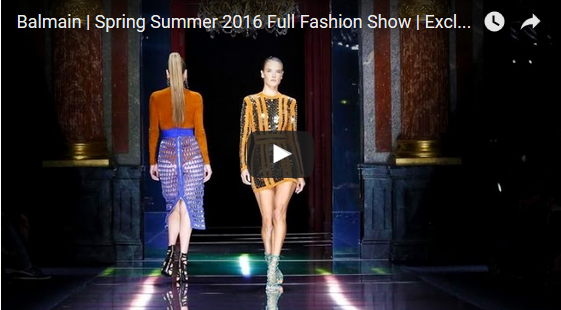
Luxury and fashion networks in the Asian giant
The Asian giant arrives in the networks of luxury and fashion that bring the runways around the world. Spring is loaded with transparencies, networks and perforations that leave little to the imagination. Gone are the predominant flowers and pastel colors. The wardrobe is reinventing itself, and it is doing so while in the purest Madona style forming networks of luxury and fashion.
Fashion magazines bring forth a group of celebrities who have succumbed to the power of Balmain and Chanel on the cover and interior designs. Among the several outfits that have been selected in this emerging spring-summer season , highlighted are the sets of » networks of luxury and style «. Both the catwalk models of Paris, Milan and New York and the famous actresses and singers, are happy with the new designs that leave little to the imagination.
https://www.youtube.com/watch?v=yBVxXg7iUzg
Balmain-Spring/Summer 2016 Full Fashion Show
Selena Gomez , Bianca Brandolini , Miranda Kerr , Cate Blanchet and Eva Longoria are head over heels about the new designs that stand out in red runways around the world, from pure white to metallic black. The net’s touch plays a part either in combination or solo as both instagramers and the most famous street styles of the moment.
While the new season is taking the catwalks, the Chinese market takes power in the streets. Not only can you see this in revolutionary trend individuals in the business world, such as Eva Chen . The independent designer , Liu Lu , as well as outstanding Chinese entrepreneurs make their intentions clear: to move the fashion and chic to their country’s streets.
Shangguan Zhe (@sankuanz), Fiona Lau y Kain Picken, Vega Zaishi Wang, Christine Lau and Anais Mak are some of the names that have caused big impressions in 2015. But what can we highlight if we travel to, say, Shanghaï ?
Luxury flows through the streets of Chinese cities and towns . During a visit to Shanghai one could see that the Chinese citizens dressed proudly, with all sorts of backpacks and handbags taken from the most recent sales of Prada , Chanel and Dior. At first glance it seemed that they did not feel passion for fashion in general, but with a more careful look one could see that they are as brave as the Londoners and feel as comfortable with styles as the models on the catwalk.
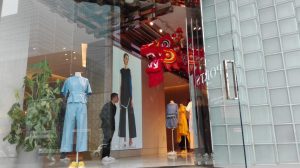
The great work being accomplished by bright Chinese designers like Liu Lu, Xander Zhou, Uma Wang or Zuc Zug is gradually gaining respect in the most privileged areas of China. There is no doubt that they are known internationally, but his venture has accomplished some fascinating: to cause a typical Chinese citizen to change the traditional blue, black or brown dress to an innovative one filled with a wide range of colors, styles and, it seems that in spring, luxury and fashion networks.
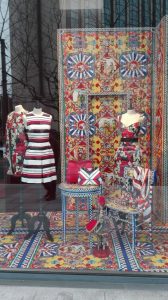

Redes de Moda y lujo en el gigante asiático
El gigante asiático cae en las redes de moda y lujo que traen las pasarelas de todo el mundo. La primavera viene cargada de transparencias, redes y perforados que dejan poco a la imaginación. Atrás quedaron las predominantes flores y los colores pastel. El armario se reinventa y lo hace al más puro estilo Madona formando redes de lujo y moda.
Las revistas de moda sacan en portada y en los diseños interiores, a un conjunto de celebrities que han sucumbido al poder de Balmain y Chanel. Entre las elecciones de outfits que han seleccionado en esta emergente temporada primavera-verano, destacan un conjunto de “redes de lujo y estilo”. Tanto las modelos de las pasarelas de París, Milán y Nueva York como las famosas actrices y cantantes, lucen felices los nuevos diseños que dejan poco a la imaginación.
Selena Gomez, Bianca Brandolini, Miranda Kerr, Cate Blanchet o Eva Longoria se pierden por los nuevos diseños que desde el blanco más puro al negro metalizado destacan en pasarelas rojas de todo el mundo. El toque de red juega combinado o en solitario tanto en instagramers como street styles más afamadas del momento.
Mientras que la nueva temporada va tomando las pasarelas el mercado asiático chino toma poder en la calle. No solo puede verse la revolucionaria tendencia en personajes del mundo de la empresa como Eva Chen. La diseñadora independiente, Liu Lu, así como destacados emprendedores chinos dejan clara su intención de trasladar lo fashion y chic a las calles de su país.
Shangguan Zhe (@sankuanz), Fiona Lau y Kain Picken, Vega Zaishi Wang, Christine Lau y Anais Mak son algunos de los nombres que han sonado a fuerza de tacones en 2015. Pero, ¿qué podemos destacar si nos damos un paseo, por ejemplo, por Shanghaï?
El lujo recorre las calles de las ciudades y pueblos chinos. En una visita a Shanghaï las ciudadanas chinas, principalmente, lucían orgullosas toda clase de bolso y mochilas sacados de las últimas temporadas de Prada, Chanel y Dior. A primera vista daba la impresión de que no sentían pasión por la moda en general pero solo hacía falta observar para ver que son tan valientes como las londinenses y se sienten tan cómodas con los estilos como las modelos en la pasarela.

Tienda Portsaid, Shanghai
El gran trabajo que están realizando diseñadores chinos como la brillante Liu Lu, Xander Zhou, Uma Wang o Zuc Zug va cobrando sentido poco a poco en las zonas más privilegiadas de China. Sin duda son internacionalmente conocidos pero su emprendimiento ha conseguido que una ciudadana china cambie el tradicional atuendo en azul, negro o marrón por una gama aperturista e innovadora cargada de color, estilo y, parece ser que en primavera, redes de lujo y Moda.

Tienda Dolce & Gabbana, Shanghai
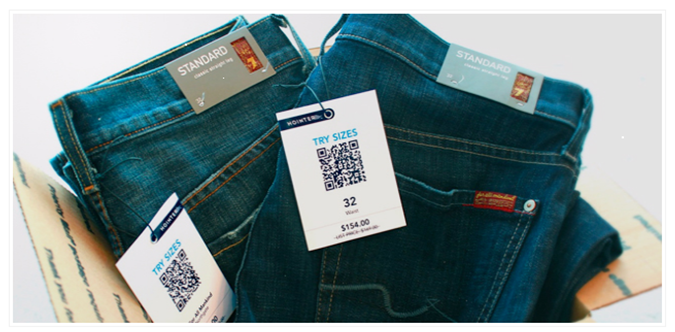
Do you know what a QR code is?
After multiple interviews with a diverse number of individuals, one can be truly astonished at the results yielded from them. Some coincide, while others contradict each other. However, in all attempts for knowledge, there has been one question which always received the same answer.
If I were in your shoes at this moment, I would probably be wondering.. What could it be? In this specific case of intriguing knowledge I will not leave you wondering, since that wouldn’t be fair. The question was the following:
“Do you know what a QR code is?”
Surprisingly, 98% of the people surveyed answered NO to this question.
Yet when they were told that it was the famous square composed barcode that is scanned on travels by train or plane, then they strongly insist that knew of it. Not only that, but also that they have used it on several occasions before. One of lifes curiosities… the number of things we use but do not know the name for.
Regardless, what is important is not that individuals know the name, but that they use it.
Now that we know the these «geometrical figures» are a normal sight in the scope of transport we wonder, is it the same in the world of fashion? In my opinion, the QR code still has a far way to go.
When one observes the labels in clothing, they forget that in each of them there is this before mentioned code, albeit not always. Not all brands include it, and some of them offer little to no additional information even if they are.
Brands like Zara and Promod are few of the ones that do. The first redirects you to their website, while the second accomplishes the improved action of displaying a model with the clothing on. Similarly, scanning the QR code in Promod allows the buyer to access additional information regarding specific sizes of the clothing as well as complementing products that could be combined with it (in the case of pants: shoes, handbags, sweaters, scarves, ect.). This is the right approach that all other brands should follow.
But, even after this, the QR code is not sufficiently attractive. People would not lose their time scanning it. They believe there is no added value.
Thus, I ask you: What information would the QR code have to offer for it not to be a waste of time to scan with your phones? Should there be more advertisements about this asset in stores? Is it worth spending money in this technology?
I hope you all think about this, as I leave a sample of Ralph Lauren. Will you waste your time scanning it?


¿Sabes lo que es el código QR?
Después de realizar múltiples entrevistas a un gran número de personas, uno realmente se sorprende con cada una de las respuestas que obtiene. Algunas son coincidentes, otras, muy dispares. Sin embargo, en todos mis intentos por recabar información, ante una de mis preguntas, siempre obtuve la misma respuesta.
Si yo fuera ustedes, una vocecita interior llamaría mi atención. Esta me diría algo así como…¿De qué se trata exactamente?
Frente a esta situación de completa intriga por el saber, yo no voy a ser quién para dejarles con la intriga. Aunque podría, no sería justo. Mi pregunta era la siguiente:
“¿Conoces lo qué es el código QR?”
Sorprendentemente, el 98% de los encuestados respondía que NO sabía lo que era.
Ahora, si al entrevistado se le explicaba que se trataba del famoso “cuadradito” que se escanea a la hora de viajar en tren y en avión, entonces afirmaban rotundamente que si lo conocían. No sólo eso, sino que para más inri lo habían utilizado en varias ocasiones. Curiosidades de la vida…cuantas cosas utilizamos que en realidad no sabemos que nombre tienen.
No obstante, lo importante no es que la gente lo conozca por su nombre, sino más bien, que la gente lo utilice.
En el ámbito de los transportes ya es normal ver estas “figuras geométricas” pero, ¿y en el mundo de la moda? En mi opinión, el QR todavía tiene mucho camino por recorrer.
Cuando uno observa las etiquetas de las prendas de ropa, uno se percata de que en ellas, a veces, podemos encontrar el susodicho código, pero no siempre. No todas las marcas lo imprimen. Y algunas, a pesar de imprimirlo, no ofrecen ninguna información adicional.
Marcas como Zara y Promod sí lo hacen. La primera, te redirecciona a su propia página web, mientras que la segunda, mejorada, te redirecciona a una imagen de una modelo con la prenda puesta. Asimismo, escaneando el QR de Promod, el cliente obtiene información adicional de ciertas medidas de la misma en centímetros y de complementos que pueden combinar con ésta (en el caso de que sea un pantalón: zapatos, bolsos, blusas, fulares, etc.). Ésta es la línea a seguir por todas las marcas.
Pero, a pesar de ello, el código QR sigue sin ser lo suficientemente atractivo. Las personas no perderían su tiempo en escanearlo. Consideran que no existe ningún valor añadido.
Por lo tanto, yo les pregunto, ¿Qué información debería ofrecer el QR para que perdieran su tiempo en escanearlo con su móvil? ¿Se debería de hacer más publicidad de éste instrumento en las tiendas? ¿Es necesario invertir dinero en esta tecnología?
Espero reflexionen sobre ello y les dejo aquí una pequeña muestra de Ralph Lauren. ¿Perderán su tiempo en escanearlo?.

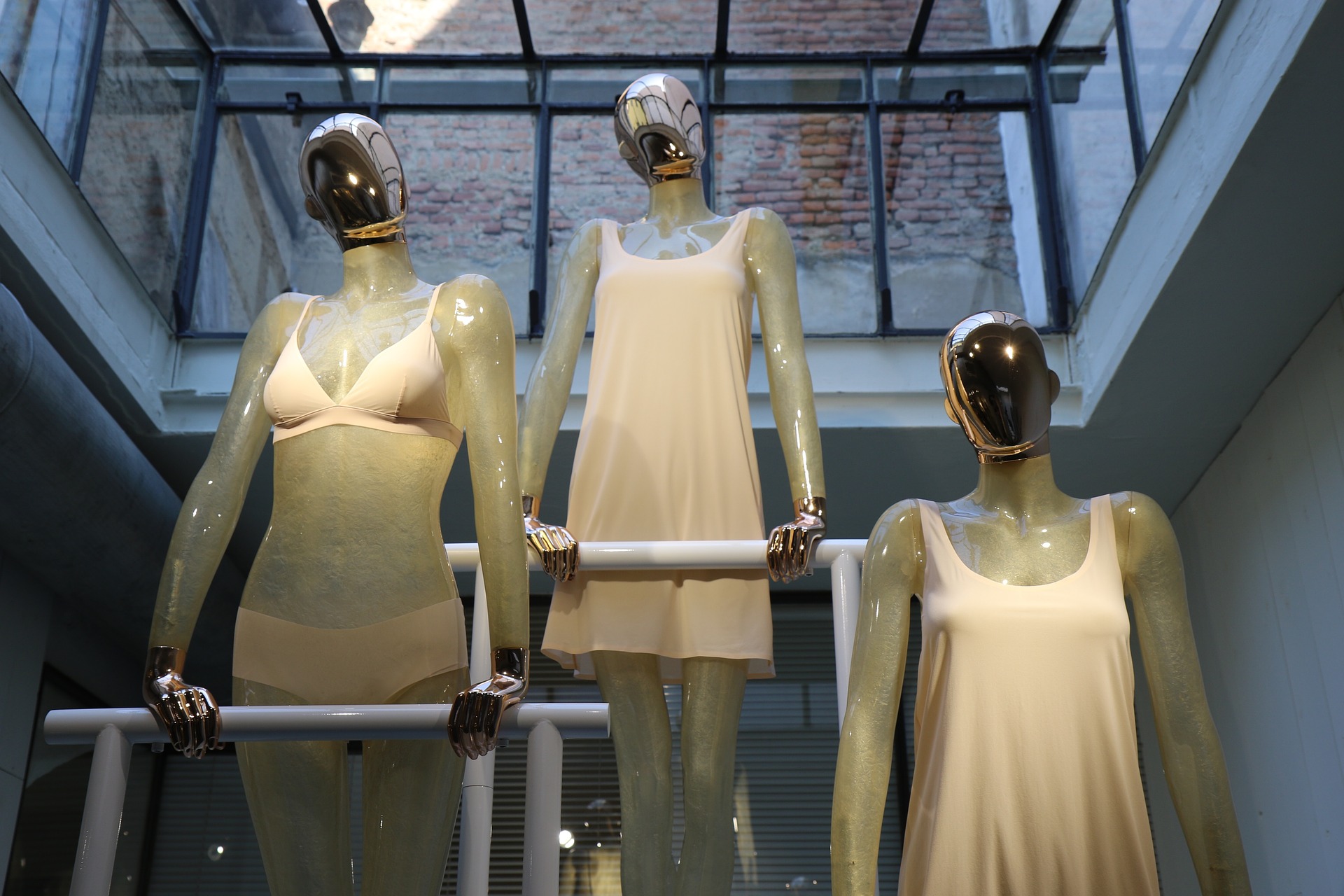
The new tendencies of fashion and technology
Greetings friends, how is everyone? Dress60 will now immerse itself in technology in order to advance with the new trends that are captivating everyone’s attention. The diverse communication methods are showing the revolutionary fashion sector tendencies, causing the tables to shake. As the months go by, technology keeps growing, shocking us with new possibilities, perfecting previous existing methods. Furthermore, this technology is now starting to enter the fashion world, enveloping it with virtual reality, 3D glasses and multifunctional robots.
Moving on to the “new digital era”, we find different digital tendencies and innovation, focusing on fashion. The times with predetermined manikin sizes are over, the new manikins now adapt to each individuals sizes. This new project, known as iDummy, is the result of long years of hard work. This promising and brilliant challenge has transformed into a viral idea in social networks, attracting trendy girls and engineers. Trendencias takes the official role of the loudmouth that lets us know about the robot-manikin.

Just as the thousands of users let us know, the standard manikin is a bit obsolete. Also, the personalized clothing is reaching extremes that highly entice customers. All those fashionista that had troubles picking the right size, now is the time to shop. But what truly generated frustration was having to face a model of unreachable dimensions, which did not truly represent the consumers actual body. In order to improve this problem, the proposals of future technologies will be able to solve the needs. These are the tendencies that Dress60 wants to incorporate in the shopping experience process.
The famous customer experience has evolved from the catwalk to our houses, adding an element of value to the future of fashion through the use of virtual reality. We leap from seeing the medieval Sevilla with Past View to being present in a fashion show, all thanks to what looks like simple glasses or a phone.
We will follow the evolution of this promising marriage formed by technology in the digital age and the capitalized fashion.

Nuevas tendencias en moda y tecnología
¿Qué hay de nuevo amigos? Dress60 se viste de tecnología para avanzar sobre las nuevas tendencias que están acaparando la atención de todos. Cuando los diferentes medios de comunicación advierten de una revolucionaria tendencia en el sector de la moda las mesas comienzan a temblar. Los meses avanzan y la tecnología sigue maravillando con nuevos inventos o, simplemente, con los mismos instrumentos pero perfeccionados. Más si cabe, la tecnología quiere abordar el sector de la moda y esta vez quiere envolverla de realidad aumentada, gafas 3D y robots multifuncionales. Pasamos de hablar de «nueva era digital» a encontrar innovación y evolución digital en diferentes tendencias, en este caso en la moda.
Atrás quedaron los maniquíes de tallas predeterminadas. Descubrimos el nuevo maniquí – robot que se adapta a tus medidas. Se dice pronto pero el proyecto que lleva consigo el nombre de iDummy es el resultado de años de duro trabajo. Un reto prometedor y brillante se ha convertido en viral en las redes sociales atrayendo a fashionistas e ingenieros. Trendencias toma el rol de vocero oficial y nos pone al tanto de este nuevo robot-maniquí.

Tal y como reclaman miles de usuarios y usuarias, el maniquí estándar está un poco obsoleto mientras que las tallas no predeterminadas, junto con la personalización, van tomando forma hasta tal extremo que nos encanta. Las llamadas fashionistas anunciaron que tenían problemas con la elección de la talla adecuada, a la hora de ir a comprar. Pero lo que sí generaba frustración, en algunas ocasiones, era el enfrentarse a una modelo de alturas a veces inalcanzables, que no reflejaba el cuerpo estándar de las compradoras.
Ante estas situaciones, las nuevas propuestas tecnológicas son una apuesta de futuro en la resolución de estos dilemas. Tendencias que Dress60 quiere incorporar en la concepción de «experiencia de compra».
El famoso customer experience evoluciona de la pasarela a la casa, añadiendo otro elemento más de valor al “mundo fashion” de la mano de la realidad aumentada. Pasamos de recorrer la Sevilla medieval con Past View a estar presentes en un fashion show, gracias a la ayuda de lo que parecen unas simples gafas y un móvil.
Seguimos la evolución de este prometedor matrimonio que forman tecnología en la era digital y Moda con mayúsculas.
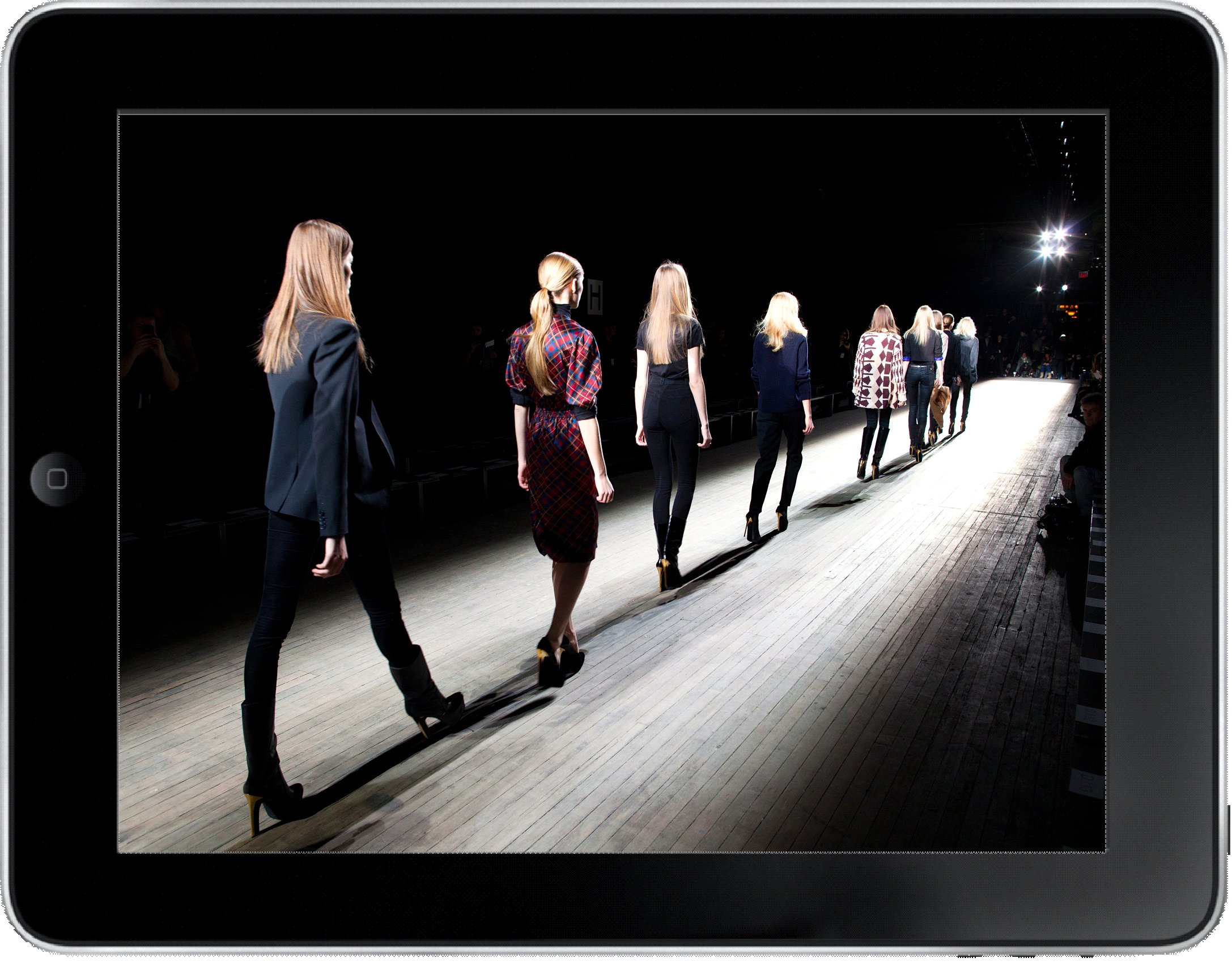
The digital future of Fashion
The world of fashion is changing at a tremendous pace. Newer technologies are born and introduced every day, originating in Balenciaga, Ortega or Blahnik. But… Why? There are two basic reasons: The first is attributed to the evolution of new technologies, and the second is due to the Millennials. The digital future of fashion is almost here.
It is quite likely that one of them is reading this article, but who are these millennials exactly? To define them simply, they are the individuals that belong to the generation Y, who have been born in the last two decades of the twentieth century. Can you identify yourself as one of them? A major difference between this generation and the previous ones (generation X and Baby Boomers), is that we are much more influenced by technology.
“Kids used to be born with bread in their hands.
Nowadays…they are born with a fully mastered mobile phone and tablet ”.
Fashion brands are aware of this change. Thus, they must add and implement new technologies in order to interact with their future clients. Zara, Sephora, John Lewis, Tesco and many others have already began with this transformation.
However, what excels the most in these new tendencies that fill the fashion market are digital mirrors. Do you know about them? These new products are already revolutionizing the experience in stores all around the world. This is how a new method to try on clothes is born. Some stores like Ralph Lauren have already implemented this new tech in Manhattan, however, when will it reach Spain?
It is possible that introducing this new experience could boost sales. Nevertheless, it has been observed that there is an increasing tendency towards purchasing clothing product online in the retail world. How could this sales be further increased? This would be the next step that the largest brands in the world of fashion are facing. The next issue would be the mobile phone. This is the future, one that is in the hands of the Millennials.
See you in the next post.
“Millennials are driving a fundamental change in the way we think about corporate culture and what we see as the potential for impact in the social sector by both companies and employees”
Jean Case


